Quick guide for flexible assets
NAVIGATION Fast path: As a signed in Manager or Admin, go to Account > Flexible Asset Types
PERMISSIONS The instructions below will walk you through the steps for setting up new flexible asset types. Manager or Administrator level access is required.
If you aren't familiar with flexible assets, please review our Introduction to flexible assets article before proceeding with this section.
Create a Flexible Asset Type From Template
If you’re new to IT Glue, we recommend starting with our templates so you can see how IT Glue is typically structured. You'll also have access to our Documentation Guide, which is a set of articles that explain how to enter information in IT Glue using just the templates.
- Navigate to Admin from the top navigation menu.
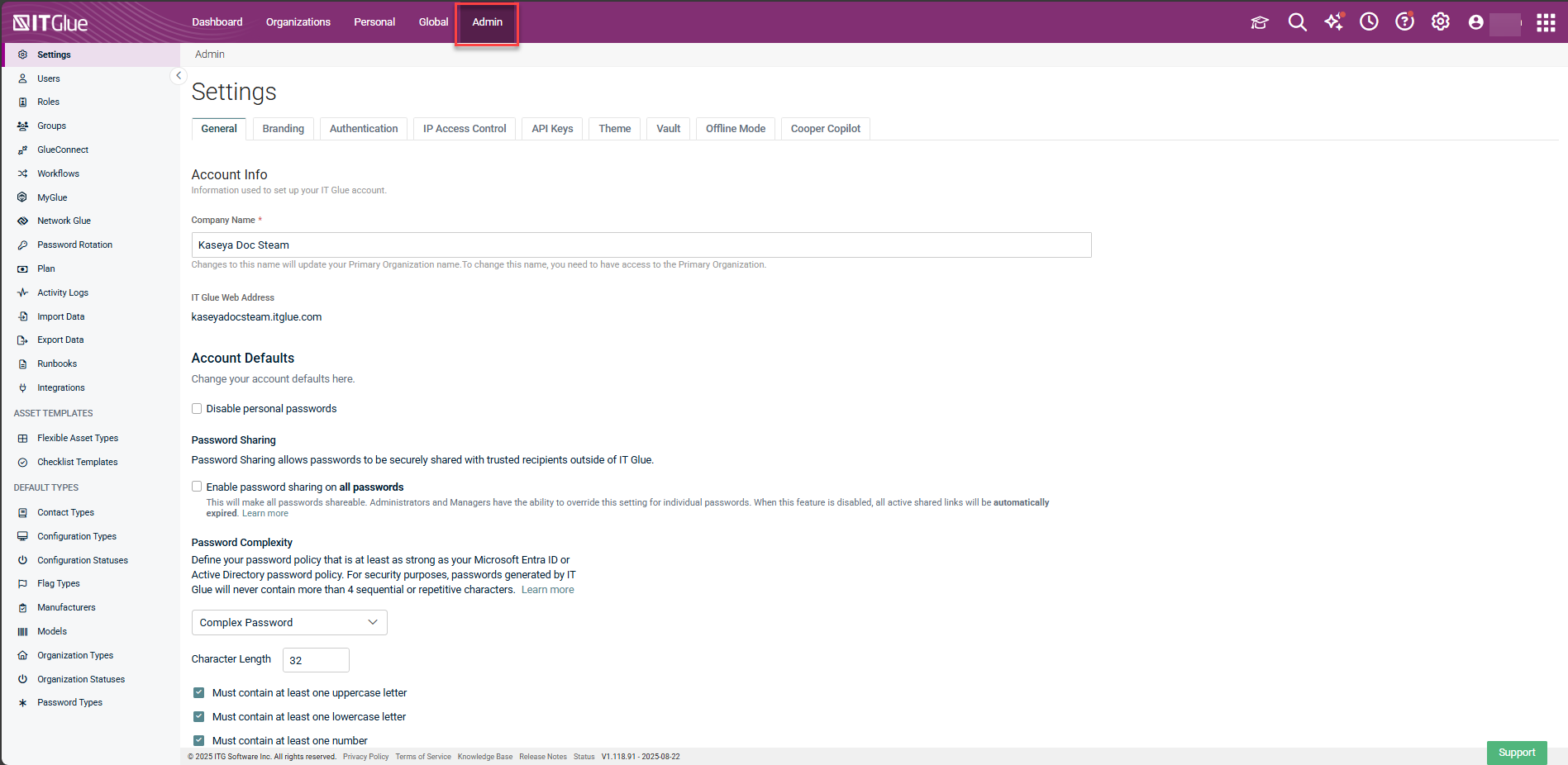
- Click Flexible Asset Types in the left navigation menu, then Click Import From Template.
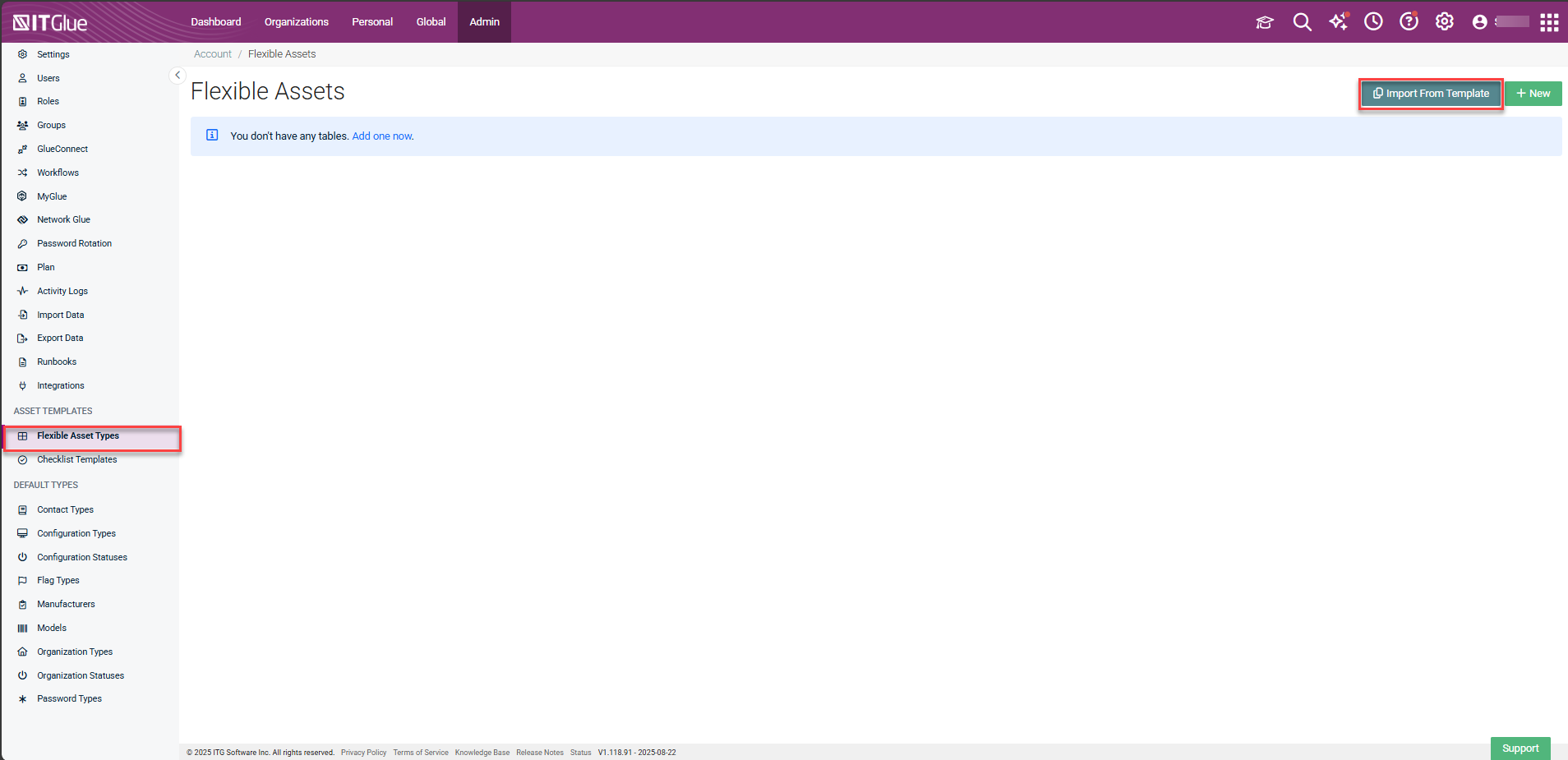
- Select the templates you want to import. The prebuilt templates include:
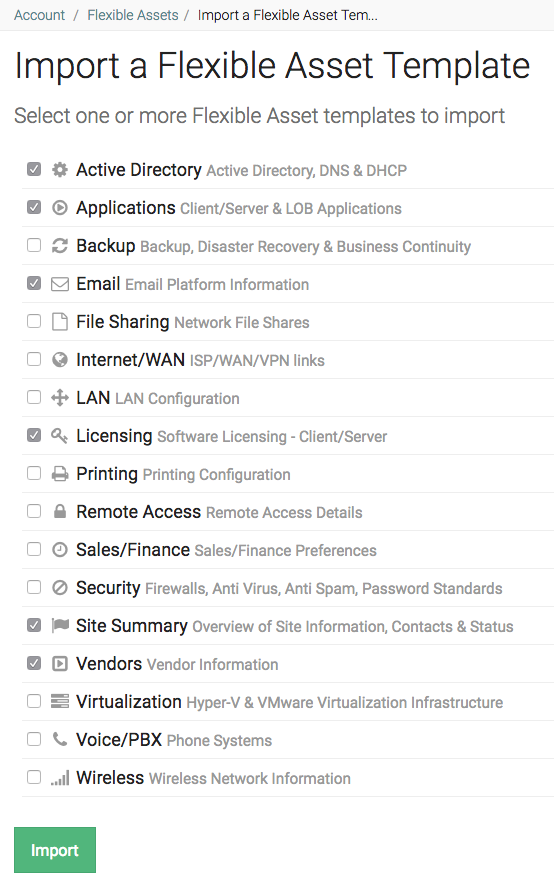
- Click the Import button to finish importing the templates.
After you import the templates, you will want to decide if the imported flexible assets meet your requirements "as is" or require customization. We recommend starting simple to encourage your team to complete every field. You can always add fields later.
NOTE You can import the latest versions of our prebuilt templates anytime. You'll need to rename the template you originally imported before the default template re-appears for import.
Creating custom Flexible Asset Templates
You can also create custom flexible asset types from scratch. By choosing the exact fields you need, your flexible assets will become perfectly adapted to your business requirements. This means you don't have to adapt your workflow to fit a template (if one even exists for your use case).
- Navigate to Admin > Flexible Asset Types and click + New in the top-right corner.
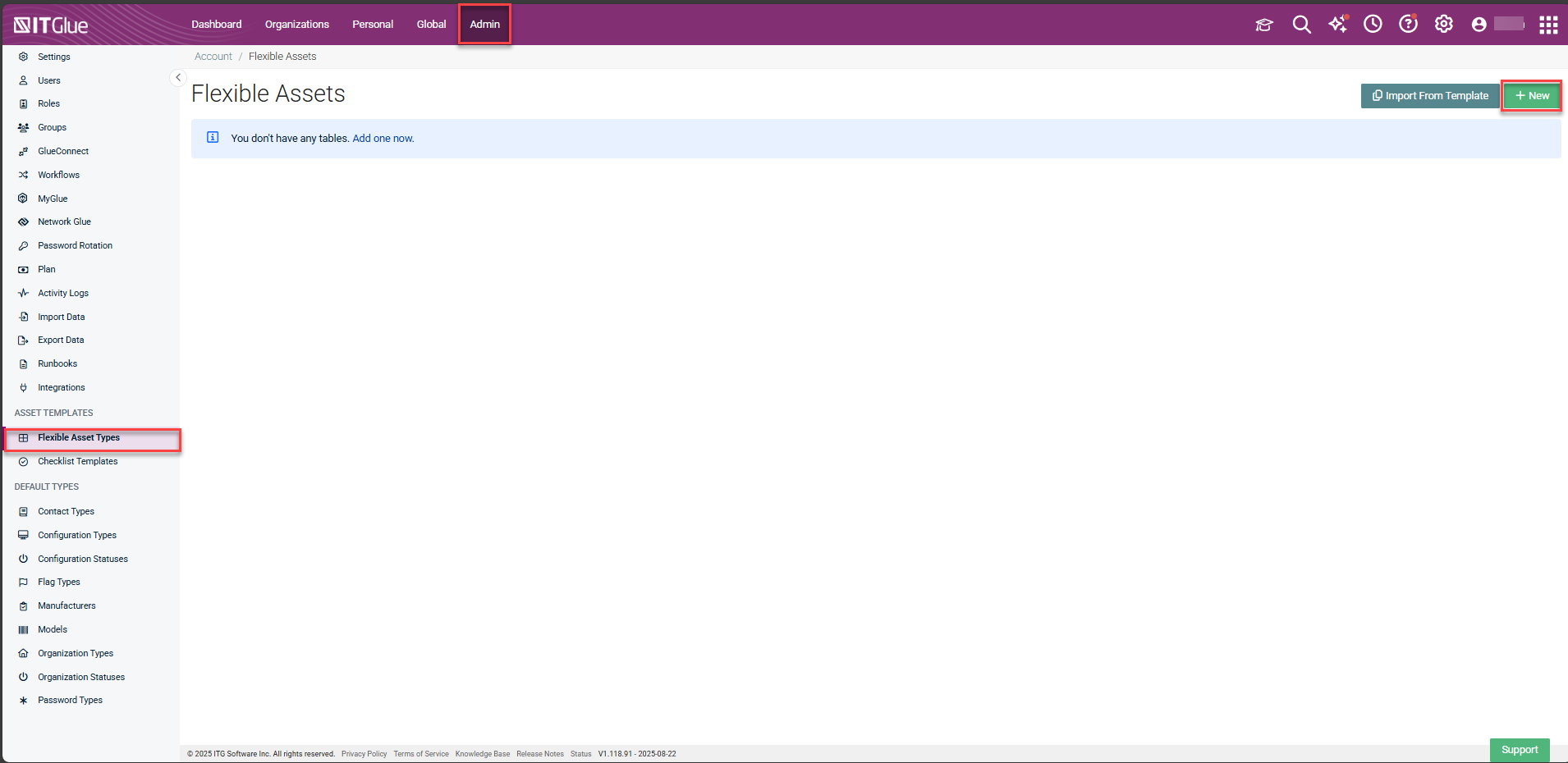
- From the Create Asset screen, give your new flexible asset a name. This name will be displayed in several places throughout your account.
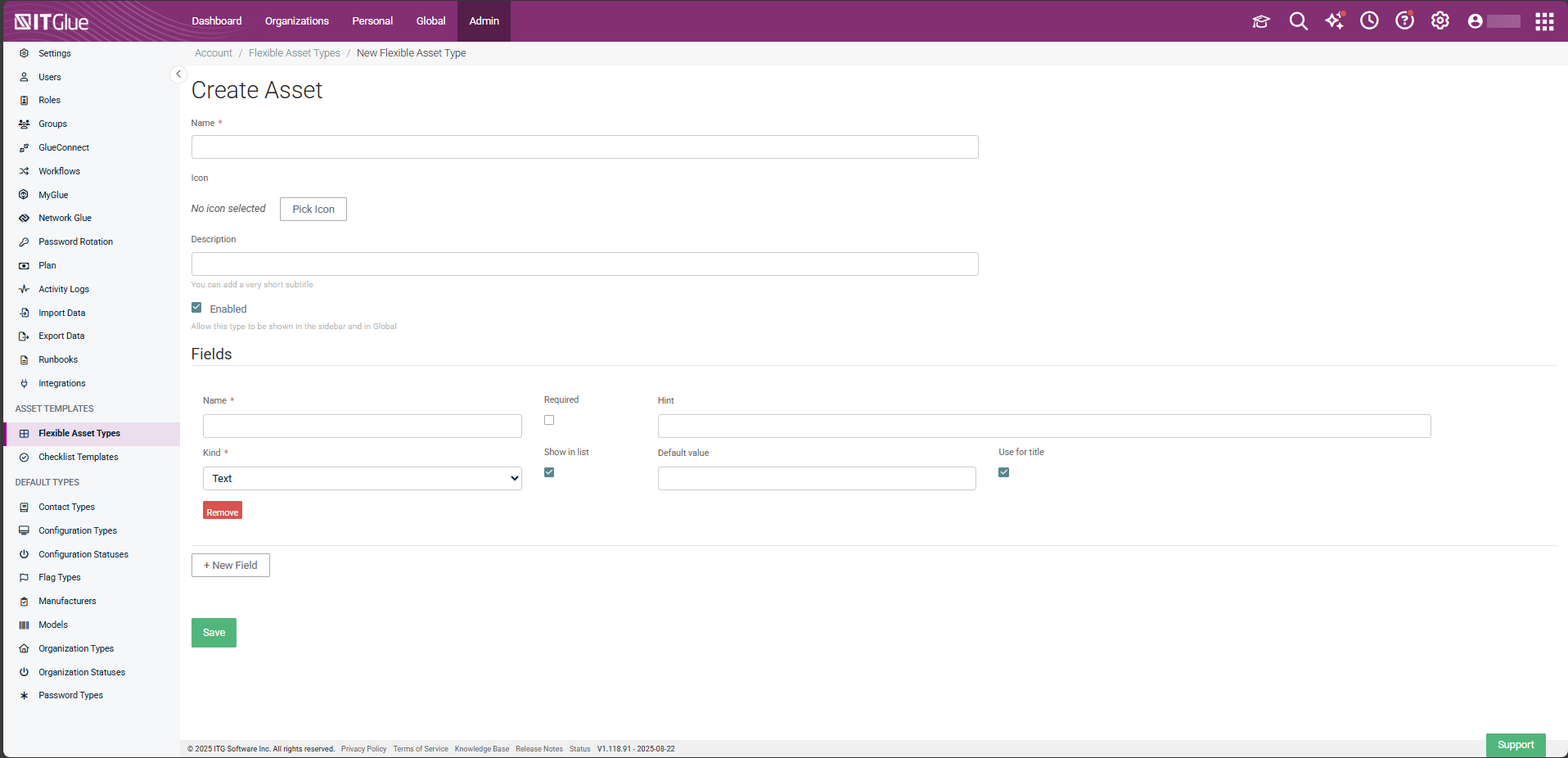
- (Optional) Choose an icon to represent the new flexible asset.
- (Optional) Enter a description.
- To add fields, click the + New field button at the bottom of the screen. After you’ve created a field, name it and specify what kind of field it is.
From the moment you create a new field, it's possible to change any of the options. However, once that field is in use, editing the "kind" attribute will be disabled.
- Make sure the fields are in the order you want them to appear in. You can change the order of fields at any time by dragging and dropping them.
- Click Save to add the new flexible asset to your account.
Once you have created the custom fields for your new asset and saved your changes, the new fields will appear on the Create and Edit screens of your flexible assets. Any fields you selected to Show in list will also appear as columns in the flexible asset list view.
As you document more flexible assets for your organizations and add new fields, a horizontal scroll bar will appear at the bottom of the table. Use this to quickly browse through all your data in one motion.
Example
Imagine you need to track the date when a hardware device will reach the end of its life cycle separate from a configuration's warranty expiration date field. Often the end-of-life data and expiration date are one and the same, but on occasion they differ. You could create the end-of-life date field in a custom flexible asset.
A new Date field

To link the date to a specific configuration, a Tag field can be used. Each Tag field is always connected to a single tag type. Because we are talking about hardware end-of-life dates, you will want to choose Configurations as the type.
A new Tag field

Then for any end-life-dates your team creates, they will be asked to "tag" the configuration as well as enter the end-of-life date. The entered date will then appear as a related item on the specified configuration:

Where next?
Make sure you add and position your flexible assets on the Organizations sidebar where your team can access them. Navigate to Account > Settings > Customize Sidebar, and then drag and drop your new flexible asset into position in the left column.
Don’t worry about getting every flexible asset design exactly right. You can easily add fields later. However, we recommend entering some data in a test organization to see the results before adding real data.
To explore the different fields that are available to add, seeFlexible asset field definitions. We currently offer 10 different kinds of fields, some of which provide additional customization options.



